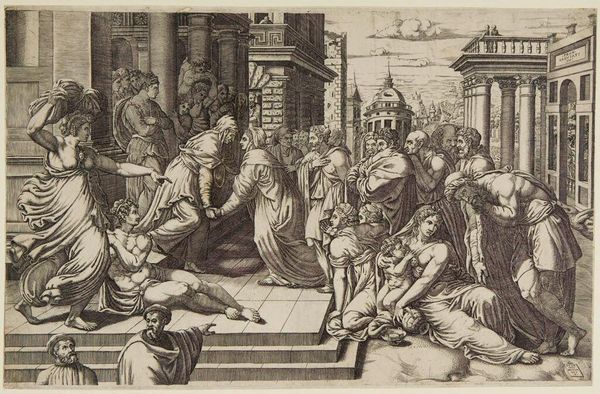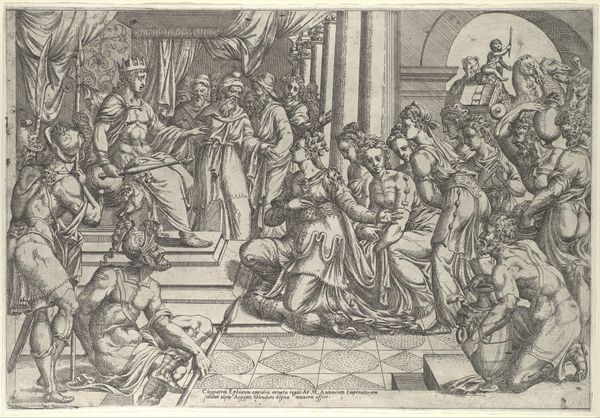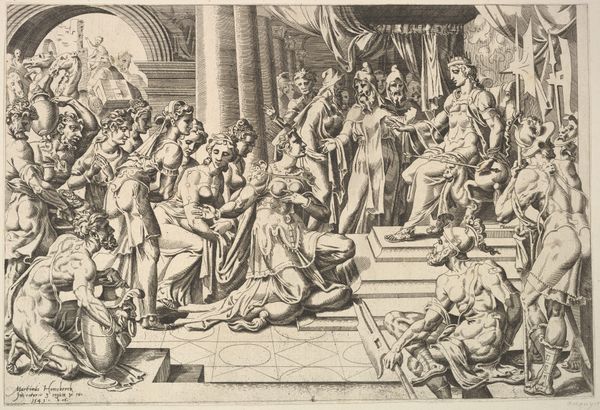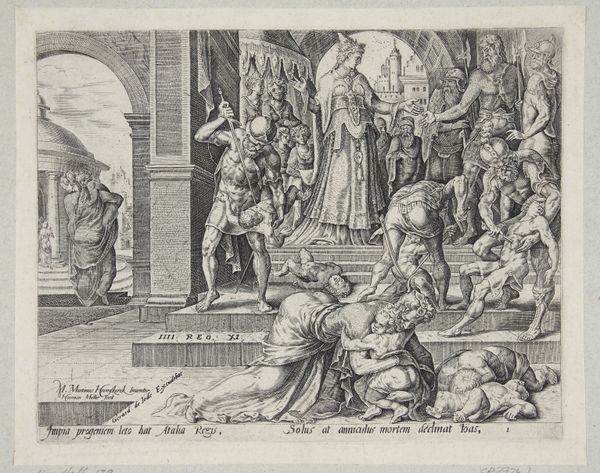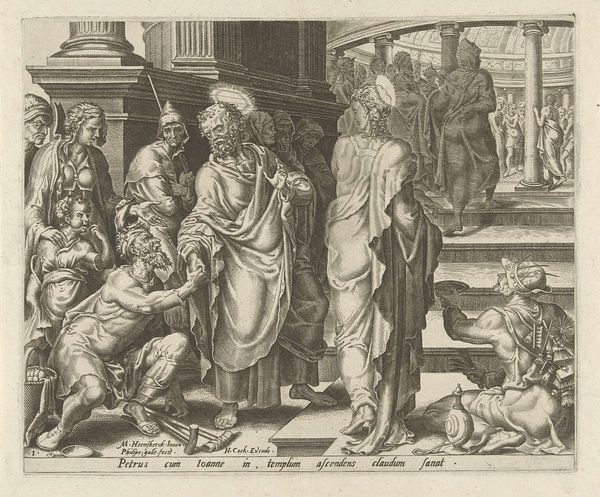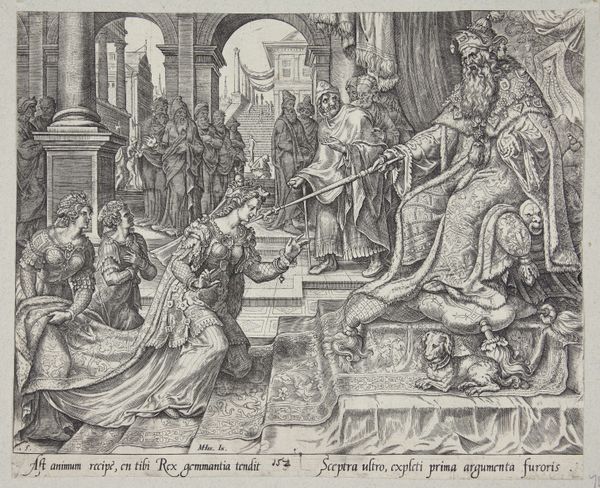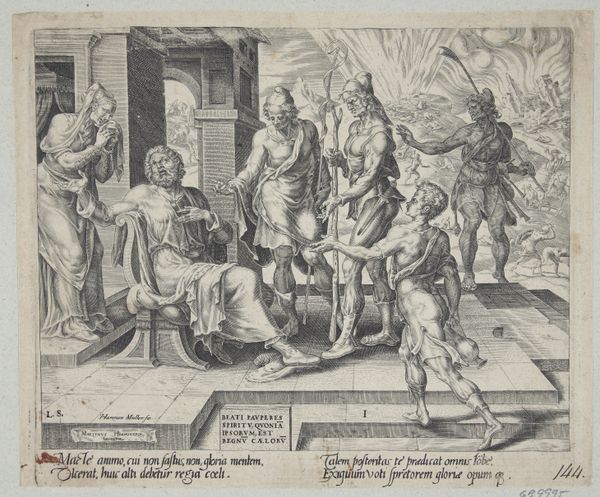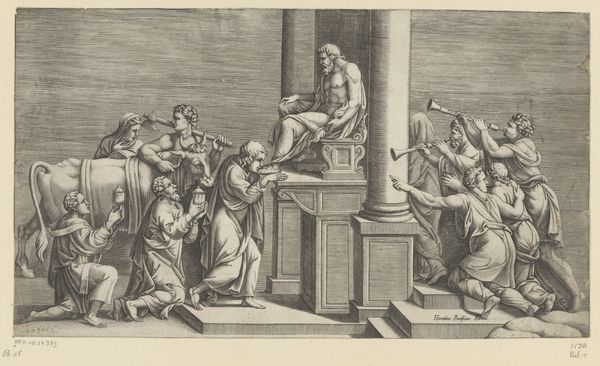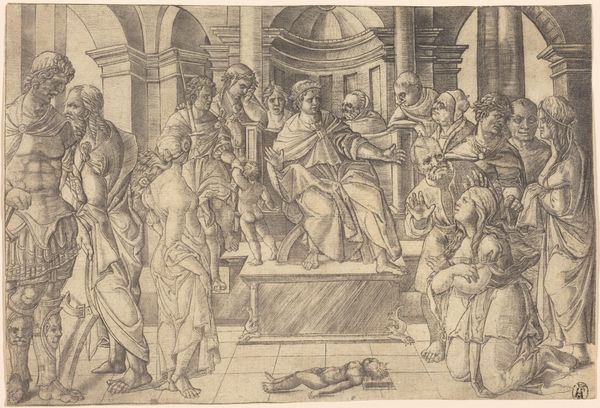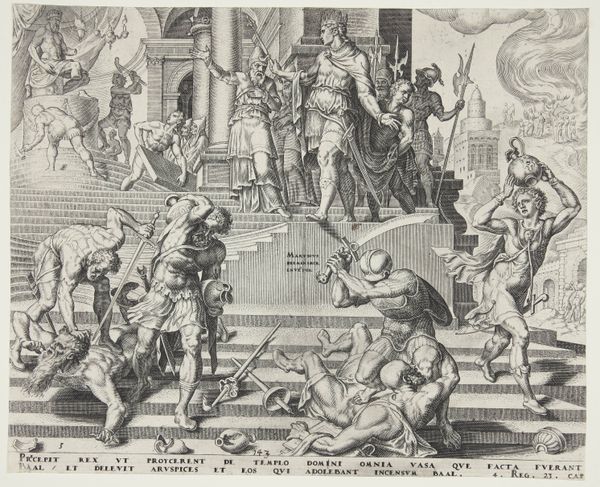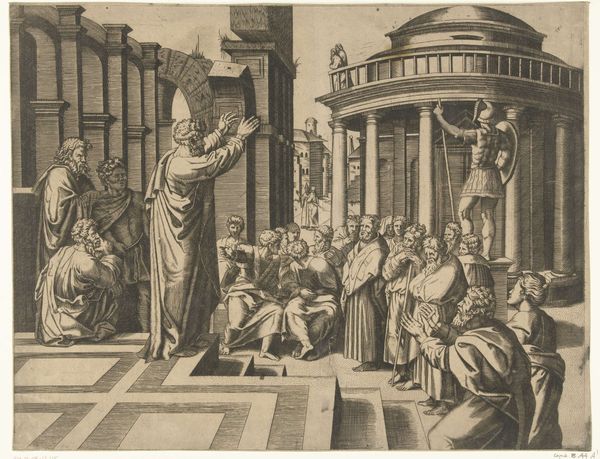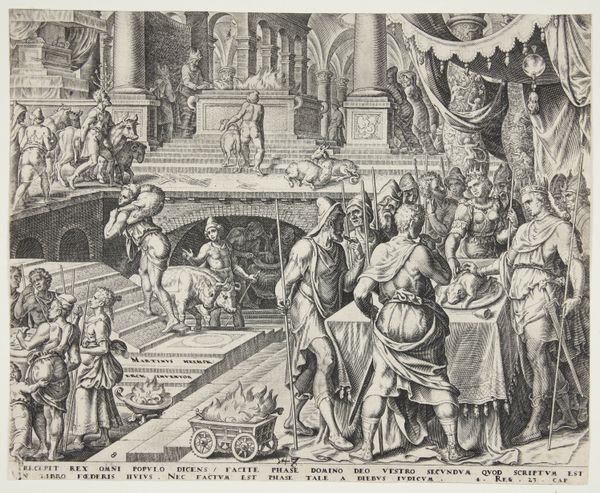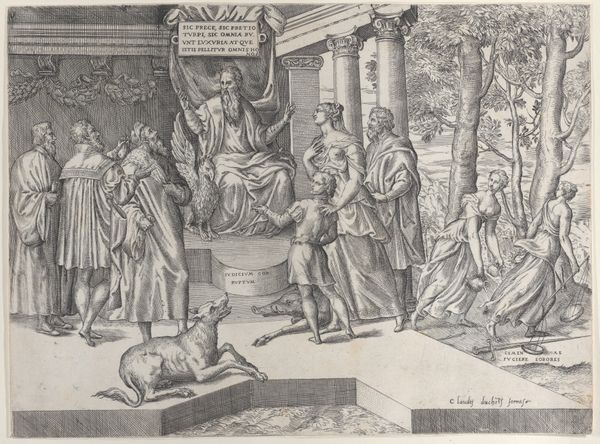
drawing, print, engraving
#
portrait
#
drawing
# print
#
landscape
#
mannerism
#
figuration
#
line
#
history-painting
#
italian-renaissance
#
engraving
Dimensions: Sheet (Trimmed): 12 5/8 × 19 11/16 in. (32 × 50 cm)
Copyright: Public Domain
Curator: Giorgio Ghisi’s “The Visitation,” dating roughly from 1540 to 1550, now resides at the Metropolitan Museum of Art. Ghisi, a master of engraving, gives us a fascinating take on this biblical scene. Editor: It's teeming with figures! What first grabs me is this chaotic energy. Like a beautifully orchestrated storm about to break. Curator: The artist's skill is so evident in the sheer detail, especially in rendering depth. Through precise lines and shading, he captures the weight of those figures, particularly the dramatic figures occupying the foreground. The classical architecture lends the piece a structured, almost theatrical quality, juxtaposing beautifully against the dynamic emotionalism portrayed within. Editor: Exactly. There is tension. A contrast between classical and… Mannerist sensibilities, perhaps? The exaggerated poses, the densely packed figures… It feels intentionally unbalanced. Sort of off-kilter, right? Like he is not merely illustrating a scene but amplifying an emotional tone. Curator: I'd agree. There’s definitely a move toward Mannerism here. Looking closely, you can almost trace how the gaze of the viewers within the artwork itself would meet and then wander and become quite fragmented in doing so… There’s a lot of distraction built into the line work itself. And it leads to a very peculiar narrative reading that is unique to this period in art history. Editor: Maybe it’s this intentional lack of harmony that gives it such lasting power, yes? Instead of aiming for perfect, placid beauty, Ghisi dives into human, and dare I say, divine commotion. It becomes not just a picture but an encounter, no? Curator: Right. It really allows the narrative tension within “The Visitation” to take hold. Ghisi’s decision to stage his artwork this way allows for a really insightful reading of just what Renaissance sensibilities had become by the time he produced the engraving. Editor: What a gift—something ancient yet buzzing with an eternal, strangely unsettled present. Thanks for untangling some of that for me.
Comments
No comments
Be the first to comment and join the conversation on the ultimate creative platform.
